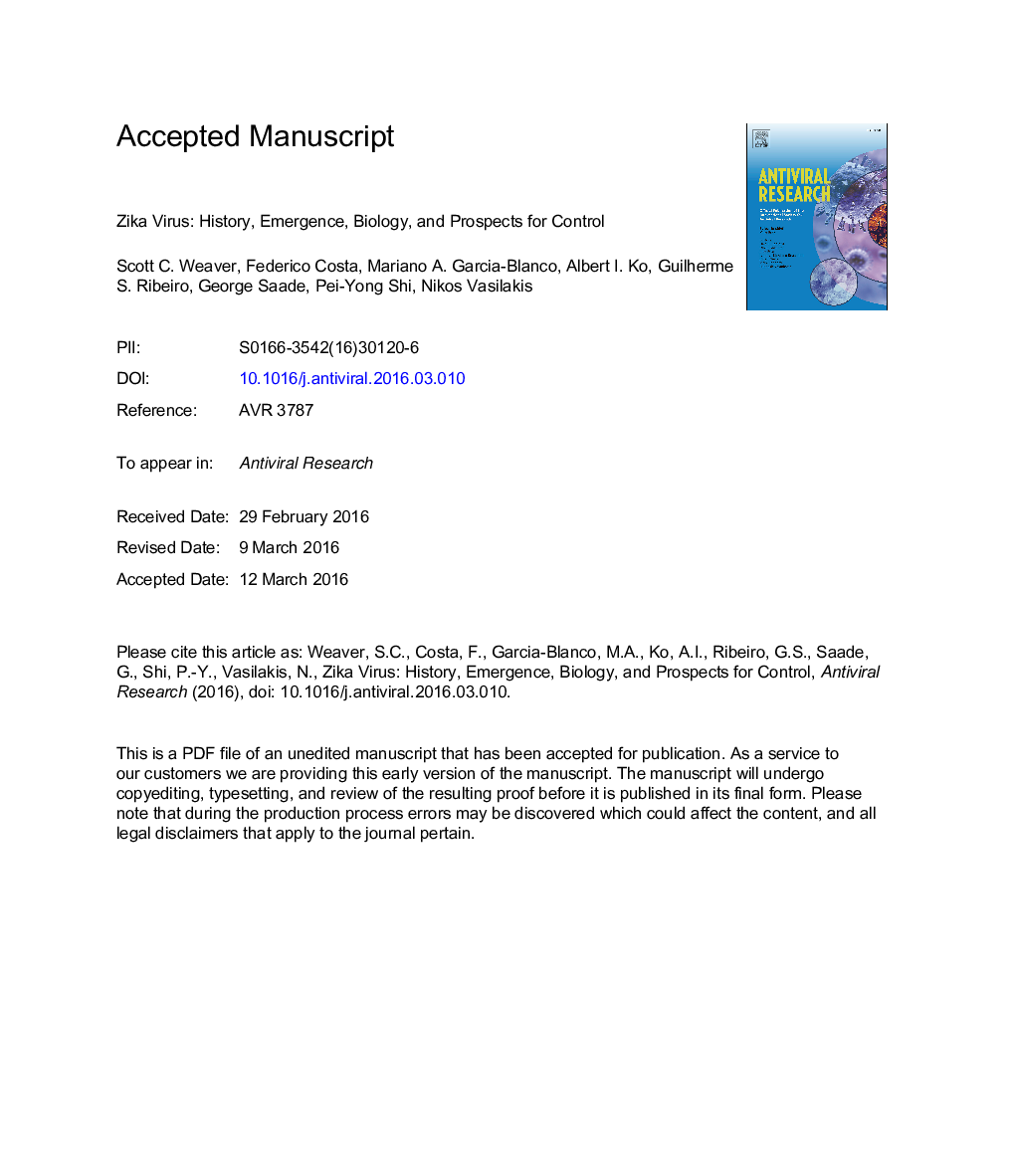| Article ID | Journal | Published Year | Pages | File Type |
|---|---|---|---|---|
| 5821775 | Antiviral Research | 2016 | 39 Pages |
Abstract
Zika virus (ZIKV), a previously obscure flavivirus closely related to dengue, West Nile, Japanese encephalitis and yellow fever viruses, has emerged explosively since 2007 to cause a series of epidemics in Micronesia, the South Pacific, and most recently the Americas. After its putative evolution in sub-Saharan Africa, ZIKV spread in the distant past to Asia and has probably emerged on multiple occasions into urban transmission cycles involving Aedes (Stegomyia) spp. mosquitoes and human amplification hosts, accompanied by a relatively mild dengue-like illness. The unprecedented numbers of people infected during recent outbreaks in the South Pacific and the Americas may have resulted in enough ZIKV infections to notice relatively rare congenital microcephaly and Guillain-Barré syndromes. Another hypothesis is that phenotypic changes in Asian lineage ZIKV strains led to these disease outcomes. Here, we review potential strategies to control the ongoing outbreak through vector-centric approaches as well as the prospects for the development of vaccines and therapeutics.
Related Topics
Life Sciences
Immunology and Microbiology
Virology
Authors
Scott C. Weaver, Federico Costa, Mariano A. Garcia-Blanco, Albert I. Ko, Guilherme S. Ribeiro, George Saade, Pei-Yong Shi, Nikos Vasilakis,
